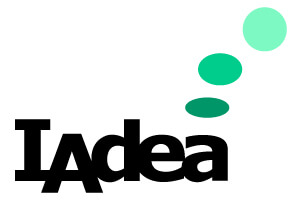We envy Intel for its effective marketing machine. Within a week of its announcement at the Digital Signage Expo Industry Forum, nearly 1,000 web sites (updated: 9,650 as of November 3rd and possibly growing) are reporting the latest Intel innovation for digital signage: a screen-player inter-pluggability specification. However when you dig into the sites, 99% are simply paraphrasing Intel’s PR script and none tells you what’s really in the package.
IAdea has received a copy of the 27-page Open Pluggable Specification (OPS). Being in the industry for over 10 years, we would like to share with you our view on the spec from the point of a digital signage technology vendor.
Open
The OPS defines, according to its title, the “Electrical, Mechanism, and Thermal,” mainly technical aspects of a plug-in media player module for LCD displays. “Open” is the main theme of this spec: as a chip vendor, Intel has little interest in keeping the barrier up for building media player modules. The more boxes get deployed, the more chips go inside. This potentially helps Intel get a good chunk of the 15 billion connected devices envisioned for 2015.
The specification is built on top of a number of “open” technologies: DisplayPort, HDMI, USB, UART. Open here does not mean “free of charge,” but that anyone can license the functionality upon paying royalty dues to a neutral organization, which is good and fair. DisplayPort is offered here as a royalty-free alternative for those who do not wish to pay tens of thousands of dollars in annual fee to license the HDMI spec. The open approach allows as many vendors as possible to create player modules compliant with the specification.
Obtaining the OPS document itself requires an approval process, where Intel asks you to provide your name and company, before getting to the download step. Not the most open way to present an otherwise open standard. However the approval process actually grants you the license to implement the spec, so it is not entirely unreasonable.
Benefits
The spec delivers these features beneficial to digital signage applications (nowhere mentioned the spec; IAdea hereby grants Intel non-exclusive, worldwide, royalty-free rights to use these lines if it wishes to):
- Standardized mechanical interface between screen and player simplifying digital signage hardware design
- Digital audio/video signal via HDMI and DisplayPort, allowing picture-perfect content reproduction
- Slot-in module design effectively lowering deployment and field maintenance costs
- Integrated cooling control enabling the player module to turn on the fans in the screen when cooling is needed
- Player-screen communication interface via UART and HDMI CEC for status reporting and control
Actually, the last point also means that a lot of system control and signaling are left “to be defined.” We will try to help in the next section.
The spec does not define any x86-specific features, so potentially competing chips from AMD or even non-PC hardware decoders can be made into a pluggable module fitting the specs. This is good for the industry and may help the spec get adopted faster.
The spec does define the physical dimensions of the module, as form factor is important to make sure the modules are really swappable for easy maintenance. However the specs constrain the box to fit within 200 mm x 118 mm x 30 mm (7.9″ x 4.6″ x 1.2″), almost 50% smaller than the already compact Asus Eee PC. We are unsure if any of the existing digital signage PCs can be quickly adapted to comply. If not then it can take months before we see any company come up with a real compliant product.
To be Desired
We think the OPS is not impressive as a “digital signage”-specific standard. The simple list of features above hardly conveys any “insight” into the hardware needs of the industry. Below we try to propose a number of signal ports that, if considered, would make OPS really relevant to digital signage:
- Control interface for the player module to adjust brightness, contrast, and (important for high-end displays) color temperature, color calibration
- Signal to report whether backlight module is functional (often the most fragile component in a display)
- Audio volume (amplifier gain) control
- Signal for motion/proximity sensor to allow triggering of playback when viewer comes into range
- Interface for accelerometer (orientation sensor) enabling management software to provide the information so properly formatted content can be correctly deployed to the right screens
- Interface for ambient light sensor enabling automatic brightness adjustment
- Interface for reading fan speeds and reporting if any fan breaks down (2nd most fragile component in a display)
- Interface for temperature sensors so preventive maintenance jobs can be scheduled to avoid system overheating, such as when the weather changes
True that all of these “can be” implemented via the USB ports or UART ports (well as of USB 3.0 we can probably replace the entire OPS plug with just a single USB connector). However we think as an industry spec OPS should make system designers aware of these design factors. Also providing dedicated electrical signals (defined but optional to implement) for these vital signs can greatly improve hardware and software compatibility both on the player and the display side.
So this is our take on the spec. If we managed to make OPS sound worthwhile, we urge you to request your copy from Intel and take it into consideration for your future digital signage designs.
DISCLOSURE
IAdea currently co-chairs the Digital Signage Special Interest Group, named an endorsing organization behind Intel’s spec. However viewpoints expressed here do not necessarily reflect the official opinion of the Group.

